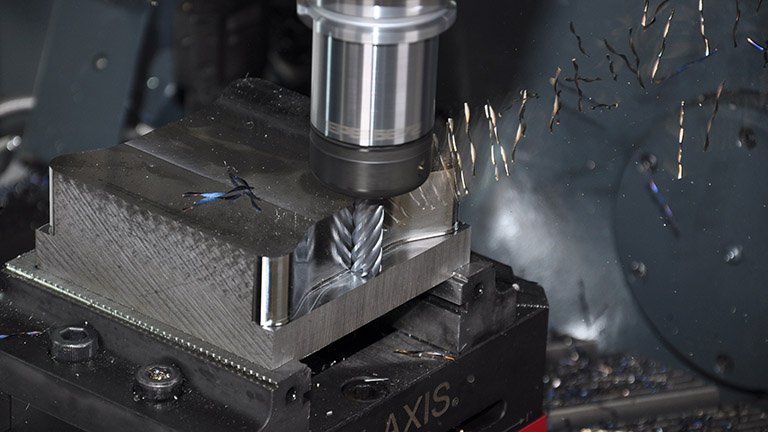The main reason why stainless steel is difficult to machine is that its thermal conductivity is not good, and the chips are easy to form chips on the tip of the tool when heated, which is the main reason for the damage of the blade. In addition, because of the large cutting force and high cutting temperature, it is difficult to achieve satisfactory results when cutting.
Today, let’s share the difficult cutting problem of stainless steel.
Cutting the bar material below φ40mm generally using high speed steel cutting knife, can achieve a better cutting effect. Machining φ40mm more than the workpiece, because of the stainless steel processing cutting speed is low, in order to improve efficiency, can use carbide cutter.
- The most important point is that the inclination of the cutting edge of the tool must be 0 °, and it can be ground on the tool grinder if conditions permit. Because when the stainless steel is cut off, the chip rubs against the groove wall seriously. If the chip cannot be rolled out vertically, the chip extrusion will occur, and the knife will be cut in severe cases. When the inclination angle of the blade is large, even if chip separation measures are adopted, the effect is not ideal.
- The arc radius of the tool tip should not be too large. If it is too large, the back corner of the tool is easy to be worn. It may be because the chip thickness at the arc is thinner, which is easy to cause work hardening and aggravate the wear of the tool side.
- The tool wear shall be grinded in time. The grinding standard of stainless steel cutting tool shall not only be determined according to the main rear, but also pay special attention to the wear degree of the auxiliary rear. If the wear of the auxiliary rear is too large, the friction between the tool and the groove side increases, resulting in the narrowing of the groove width, making it difficult to discharge the chips, and the tool wear is accelerated.
- The front surface roughness of the tool should be reduced as much as possible. The low surface roughness value can reduce the adhesive wear, reduce the cutting force, and make the cutting light and fast. Practice has proved that the service life of the tool after grinding in front of the tool is significantly improved than that of the tool without grinding.
- The negative chamfer of about 0.2mm is grinded on the cutting edge, which can reduce the blade breakage during grinding and obtain better cutting edge quality. The lower part of the knife body is fish belly shaped to increase rigidity. The relief angle of the tool pair is grinded by the outer circle of the grinding wheel, with good rigidity. The actual relief angle is about 2 ° ~ 3 °.
The tool material for processing stainless steel is generally YG alloy, which is not easy to bond and wear, and YG8 with good strength can be selected. The tool width is selected according to the bar diameter, and the cutting speed is about 60m/min.
This tool can meet the needs of general processing, φ40 ~ φ80mm bar can be cut off at a time, without the need to drive the knife around, processing should pay attention to the stainless steel chip is very sharp, such as chip is too long, feed to back, so that the chip broken, so as to avoid danger, back tool do not stay on the surface of the workpiece, in order to reduce work hardening. When cutting solid workpiece, in order to avoid tool collapse, cut to the center can be left about 1 ~ 2mm broken by hand.


